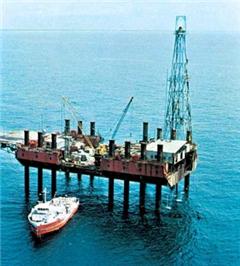|
|
Oil sinks below $100 as U.S. bailout plan voted down
The Associated Press
By Stevenson Jacobs
Published on Monday, September 29, 2008
|
|
|
|
NEW YORK — Oil prices plunged as much as $10 a barrel Monday as a
U.S. financial bailout plan failed to win legislative approval, increasing
fears a prolonged economic downturn that could sharply curtail energy
demand.
Light, sweet crude for November delivery at one point sank $10.06 to
$96.83 before paring some losses to trade at $98.26, down $8.63. It was
crude's lowest trading level since prices edged back below $100 earlier this
month; crude previously hadn't traded that low since February.
Crude has now fallen 34 percent since surging to an all-time record of
$147.27 on July 11.
Monday's sell-off was tied to anxiety over the proposed $700 billion
rescue plan. Following a week of intense negotiations, House lawmakers
on Monday defeated the emergency measure that would have absorbed
billions of dollars in banks' bad mortgage-related debt and other risky
assets in an effort to steady the teetering U.S. economy.
Oil market traders were already doubtful that the plan would be able to
unfreeze credit markets and restore calm to the financial system. Global
credit remain extremely tight, crippling companies' ability to raise capital
and cover basic costs like payroll. If the economy weakens further,
consumers and businesses around the globe would likely cut back on
energy use even more, analysts say.
"That obviously has potentially negative implications for oil demand
growth," said Michael Wittner, global head of oil research at Societe
Generale in London.
|
|
 |
|
|
|
|
|
Light, sweet crude for November delivery at
one point sank $10.06 to $96.83 before paring
some losses to trade at $98.26, down $8.63. It
was crude's lowest trading level since prices
edged back below $100 earlier this month;
crude previously hadn't traded that low since
February.
|
|
|
|
|
|
In another sign of declining U.S. demand for fuel, pump prices kept falling Monday. A gallon of regular slipped about a penny
overnight to a new national average of $3.643, according to auto club AAA, the Oil Price Information Service and Wright
Express. They peaked at $4.114 on July 17.
Prices could come down as U.S. Gulf Coast energy output ramps up following the passage of Hurricanes Ike and Gustav. About
57 percent of crude oil production and 53 percent of natural gas output remained shut-in after shutdowns prompted by the
storms, according to the U.S. Minerals Management Service.
The rescue plan would have given the administration broad power to use hundreds of billions of taxpayer dollars to purchase
devalued mortgage-related assets held by cash-starved financial firms.
Congress insisted on a stronger hand in controlling the money than the White House had wanted. The government would have
taken over huge amounts of devalued assets from beleaguered financial companies in hopes of unlocking frozen credit.
Oil prices were also pushed down by a stronger dollar. Investors often buy crude futures as a hedge against a weakening dollar
and inflation, and sell when the dollar strengthens.
While dollar gained as details of the bailout package become known, analysts said the euro was weaker also because of growing
economic problems in Europe.
"It is also a question of the euro losing ground due to a continued deterioration in the euro zone," said Olivier Jakob of
Petromatrix in Switzerland. "With the rate of bank failures increasing in Europe and the economy slowing more rapidly than
expected, pressure will continue to mount on the (European Central Bank) to lower (interest) rates."
Associated Press writers Pablo Gorondi in Budapest, Hungary and Alex Kennedy in Singapore contributed to this report.
(source: The Trucker .com)
-fs-
|
|
|
|
|